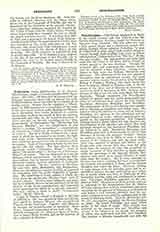

Priscianus, Latin grammarian, b. at Caesarea (Mauretania), taught at Constantinople under Anastasius I (491-518). He delivered the panegyric of the Emperor Anastasius about 512; we possess this work in 312 hexameter verses, preceded by a prologue of 22 iambic senarii. Besides this he composed a “Periegesis” in 1087 hexameters; a translation of the work of the same name, written under Hadrian by Dionysius of Alexandria; three works, dedicated to a certain Symmachus (perhaps the consul of 485), on numbers, numeration, and coins, on the metrical character of Latin comedies, on rhetoric according to the “Progymnasmata” of Hermogenes; the “Partitions XII versuum Aeneidos” (on the versification of the Aeneid); a treatise “De accentibus”; a compendium on declensions (“Institutio de nomine et pronomine et verbo”). But he is chiefly celebrated for a great work of which the last-named is an extract, the eighteen books of the “Institutiones Grammaticae”, the most important grammatical work of antiquity which we possess. Each of these eighteen books has its own special title and subject. The first sixteen, often separately copied (“Priscianus Maior”), treat of forms (“De accidentibus”); the last two (“Priscianus Minor“) of syntax. They are dedicated to a certain Julianus, consul and patrician. In this preface Priscian declares that he borrows his doctrines from the enormous volumes (spatiosa volumina) of Apollonius Dyscolus and from “the sea” (pelagus) of Herodian. He also cites Juba, Heliodorus, and Hephaestion. Moreover, he follows his sources servilely, as is proved by comparison with the extant fragments of Apollonius. His knowledge of Latin authors is chiefly derived from his predecessor Flavius Caper (end of second century). Priscian lacks judgment and taste, but he is valuable because he has preserved for us the theories of the Greek grammarians, and numerous Latin quotations for which he is our sole authority. The best edition is Hertz in Keil’s “Grammatici Latini”, II, III (1855-9).
A copy of Priscian carried to England in the time of Aldhelm (d. 709) was quoted by Bede and Alcuin, and copied by Rabanus Maurus, who reintroduced Priscian on the Continent. Together with Donatus he became the personification of grammar. More than a thousand manuscripts of his work exist. His portrait accompanies the allegorical figure of Grammar at Santa Maria Novella, and on the doorway of the cathedral of Chartres.
PAUL LEJAY

